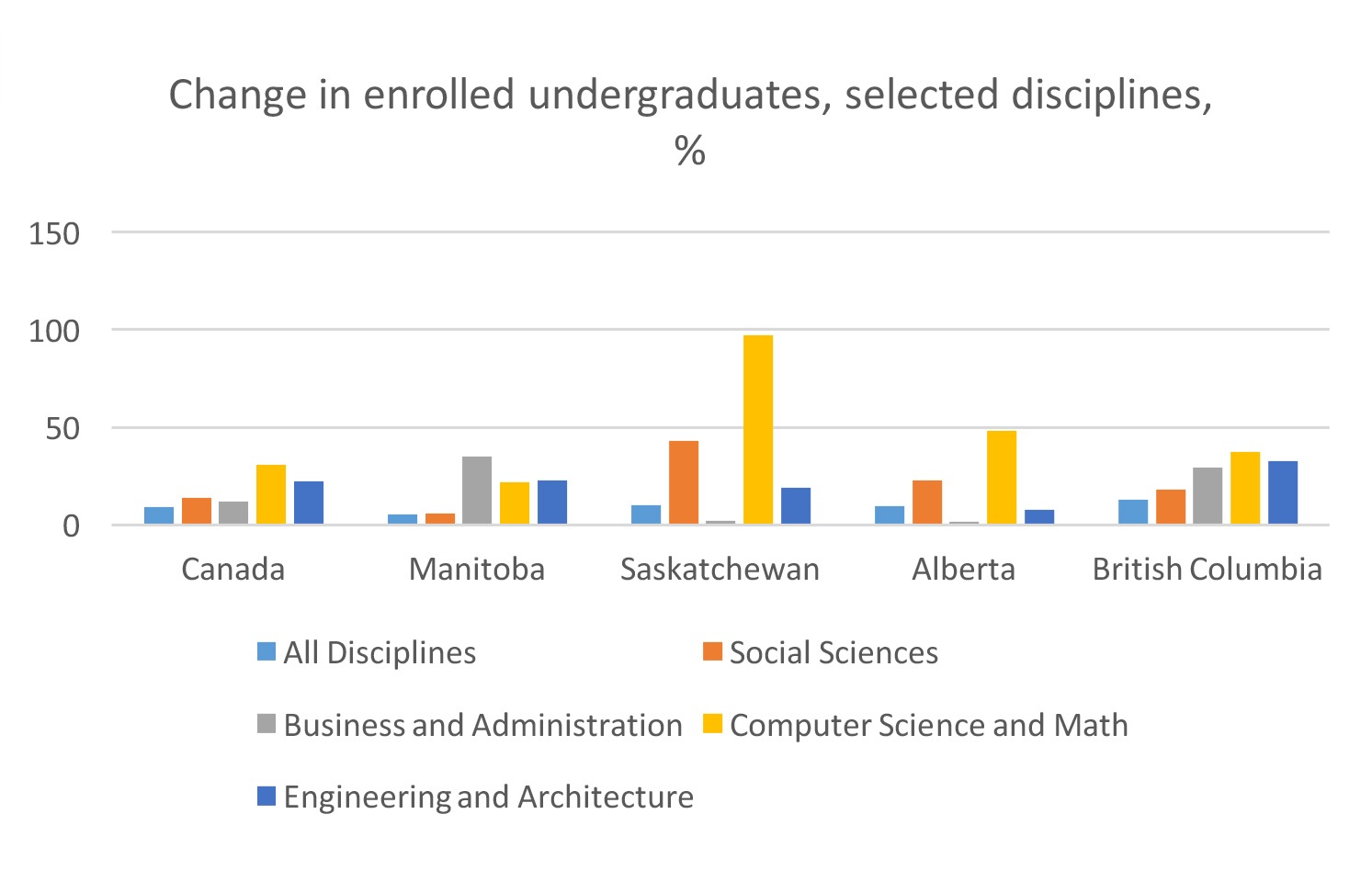Completing university still yields income dividends – especially for engineering and business grads.
The two major sources of data lend new insight into what incoming Canadian undergraduate students are choosing to study and what they can expect their incomes to be like once they graduate. Combined, they paint an intriguing picture of Canadian undergraduate students.
Data on Canadian graduates analyzed by the Education Policy Research Initiative (EPRI) show that, despite public protest over the lessening value of a university education, most graduates are not, in fact, joining the ranks of coffee shop baristas. Starting wages for the class of 2005 averaged $45,200, and rose to $74,900 eight years after graduation. By comparison, the overall average wage in Canada is just under $50,000 a year.
There are significant differences, however, between the disciplines students graduate from. Starting wages for the 2012 graduating cohort varied from $63,000 for engineering graduates to $30,000 for humanities graduates and $25,000 for fine arts graduates. Social science students earned $33,000, and business students, $42,000.
Over time, the gap between disciplines widened. Eight years into their careers, the wage differential between engineering and fine arts rose from $39,000 to $55,000; between social sciences and humanities, from $3,000 to $5,000. Even those much-maligned humanities graduates, however, were still earning above-average wages at $57,000 a year.
Statistics Canada data suggest that Canadian undergraduate students are internalizing some of the messages about labour market outcomes.[1] From 2009 to 2014, and despite a nine per cent increase in the number of undergraduate students nationwide, there was an 11 per cent decrease in the number of humanities students. Meanwhile, the number of students enrolled in mathematics and computer science increased 31 per cent, while engineering and architecture students increased by 22 per cent.
In the West, the numbers are even more dramatic. In all four provinces, growth in math and computer science students far outstripped overall undergraduate growth, with 38 per cent growth in B.C. and 97 per cent growth in Saskatchewan (though starting from a very low base at 267 students). Engineering and architecture growth also outran overall growth significantly – except in Alberta, where that discipline already represented an outsized share of students.
These trends align well with findings of the triennial Canadian University Survey Consortium (CUSC) First-Year Student Survey. It found that more than half of students list career and job preparation as their most important motivation for attending university.
Only one-quarter of students list making a difference or finding a fulfilling career as their most important motivation. It is certainly true that many students choose high-paying disciplines without being primarily motivated by the financial rewards, but in this case labour market outcomes and students’ stated interests align with the greater number of students studying for high-paying careers.
Given the general paucity of statistics on post-secondary education in Canada, the detailed income data from EPRI is full of other insights, revealing major income differences along lines of gender, discipline, and even graduation year. You can explore their interactive graphs here.


– Liam St. Louis is a research intern
[1] It seems at least plausible that some of these changes are affected by changing compositions and classifications of university degree programs and not entirely by decisions by students themselves
